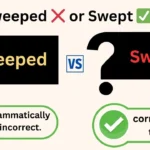When it comes to comparing two things, understanding the correct usage of comparative adjectives can significantly enhance your communication. One common point of confusion is the use of “more friendly” versus “friendlier.”
In this blog post, we’ll dive deep into these terms, explore the rules of comparatives, and clarify the proper usage to ensure your writing is both accurate and polished.
Understanding Comparative Adjectives
Comparative adjectives are used to compare differences between two nouns. They help us describe how one thing is different from another in terms of a particular quality.
- Definition: Comparative adjectives compare two things. For instance, “bigger” compares the size of two objects.
- Examples:
- “Smarter” in “John is smarter than Steve.”
- “More interesting” in “This book is more interesting than that one.”
Comparatives help in making clear distinctions and adding depth to descriptions, allowing us to articulate differences more precisely.
Rules for Forming Comparatives
The formation of comparative adjectives follows certain rules based on the adjective’s syllable count.
One-Syllable Adjectives
For adjectives with one syllable, add “-er” to the end of the adjective. This rule applies to most one-syllable adjectives.
- Example: “Tall” becomes “taller.”
- List:
- “Bright” → “brighter”
- “Fast” → “faster”
Two-Syllable Adjectives Ending in “-y”
Adjectives that end in “-y” form their comparatives by changing the “-y” to “-ier.”
- Example: “Happy” becomes “happier.”
- List:
- “Lucky” → “luckier”
- “Busy” → “busier”
Adjectives with Two or More Syllables
For adjectives with two or more syllables, use “more” before the adjective to form the comparative.
- Example: “Beautiful” becomes “more beautiful.”
- List:
- “Difficult” → “more difficult”
- “Interesting” → “more interesting”
“Friendly” and Its Comparative Forms
Definition of “Friendly”
“Friendly” is an adjective used to describe someone or something that is kind, pleasant, or supportive.
- Example: “She has a friendly demeanor.”
Why “Friendlier” is Correct
According to standard grammar rules, the comparative form of “friendly” is “friendlier.” This follows the general pattern for adjectives ending in “-ly,” which typically do not use “more” for comparatives.
- Example: “Her approach is friendlier than his.”
Usage of “More Friendly”
Although “more friendly” might be used informally or in specific contexts, it is less conventional. This form can sometimes be seen in casual writing or speech but is generally avoided in formal contexts.
- Example: “His dog is more friendly than mine.”
Examples in Context
Formal Writing Examples
In formal writing, “friendlier” is preferred to maintain grammatical precision and clarity.
- Example: “The company’s new customer service policy is friendlier to clients.”
Informal Writing Examples
In informal contexts, “more friendly” might appear due to conversational habits, though it is less grammatically precise.
- Example: “I think that new café is more friendly than the old one.”
Common Mistakes and Misunderstandings
A common mistake is using “more friendly” where “friendlier” is correct. This error can make writing appear less polished and professional. Always choose “friendlier” unless you’re deliberately aiming for a more conversational tone.
Regional and Stylistic Variations
British vs. American English
In both British and American English, “friendlier” is the standard comparative form. However, regional preferences might affect informal usage patterns.
- British English: “Her attitude is friendlier.”
- American English: “That team is friendlier than the other.”
Professional vs. Casual Settings
In professional settings, using “friendlier” aligns with formal grammar rules. In casual settings, people might use “more friendly” out of habit, but “friendlier” remains the preferred form for clarity.
Practical Tips for Choosing the Right Form
General Guidelines
- Use “friendlier” in formal and professional writing to adhere to grammatical standards.
- Reserve “more friendly” for informal contexts where a conversational tone is acceptable.
Editing and Proofreading
When editing, review your comparative adjectives to ensure they align with standard grammar rules. Tools like grammar checkers can help, but always cross-check with reliable grammar resources.
Conclusion
Understanding the correct usage of “friendlier” versus “more friendly” can enhance your writing clarity and professionalism. By adhering to grammatical standards and being mindful of context, you can ensure your comparisons are accurate and effective.
Call to Action
Have you encountered any confusing uses of comparatives in your writing? Share your experiences or questions in the comments below! For more tips on grammar and writing, explore our other articles or resources.
This comprehensive guide ensures clarity and accuracy, offering practical advice and examples to help you use comparative adjectives correctly in various contexts.

As an experienced English teacher, I’m Jessica Thompson, here to make grammar and vocabulary simple and fun. Join me on TalkSpeaker as we explore the language together, one lesson at a time!



